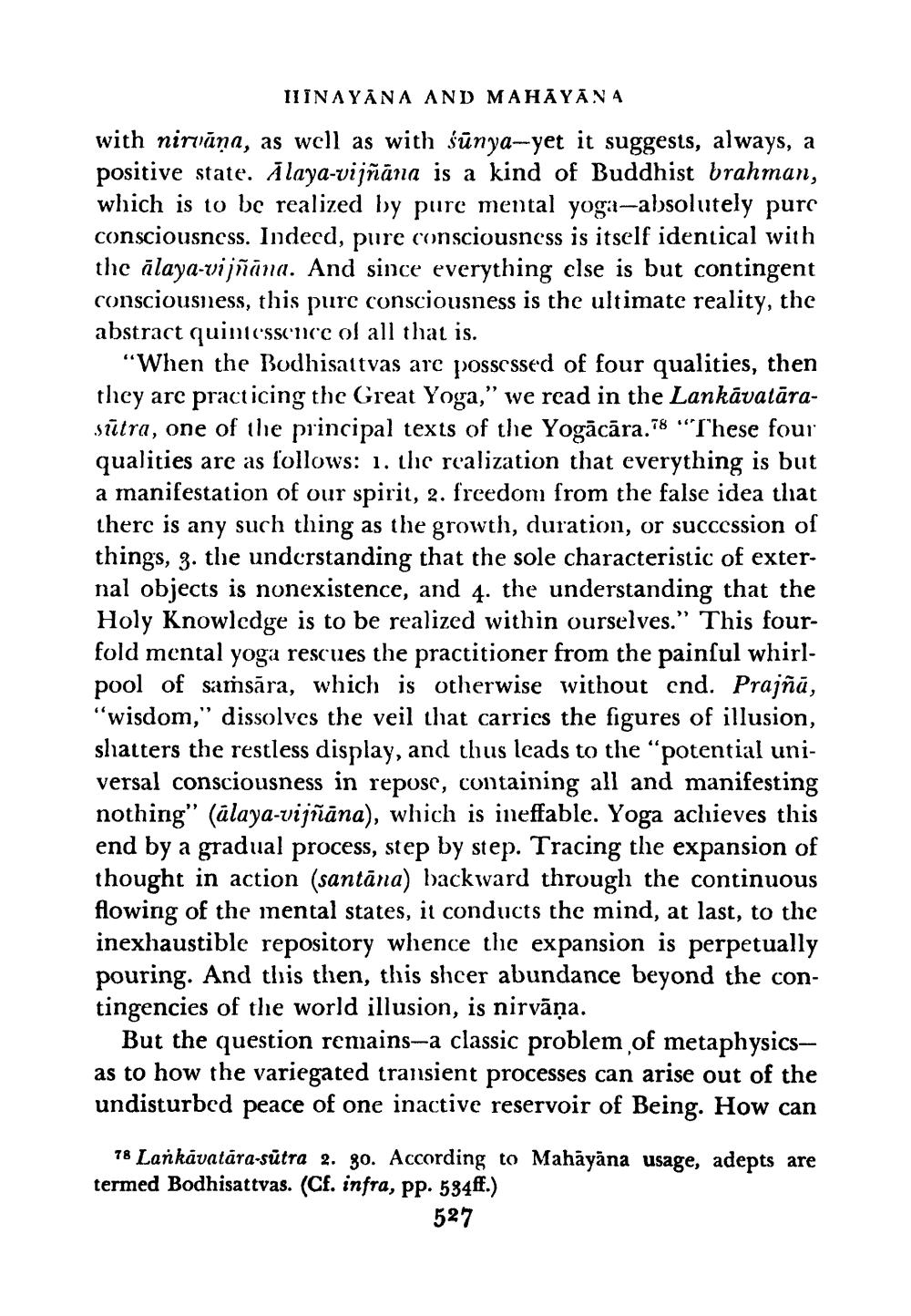________________
IIINAYANA AND MAHAYANA
with nirvana, as well as with sunya-yet it suggests, always, a positive state. Alaya-vijñāna is a kind of Buddhist brahman, which is to be realized by pure mental yoga-absolutely purc consciousness. Indeed, pure consciousness is itself identical with the alaya-vijñāna. And since everything else is but contingent consciousness, this pure consciousness is the ultimate reality, the abstract quintessence of all that is.
"When the Bodhisattvas are possessed of four qualities, then they are practicing the Great Yoga," we read in the Lankavatārasutra, one of the principal texts of the Yogācāra.78 "These four qualities are as follows: 1. the realization that everything is but a manifestation of our spirit, 2. freedom from the false idea that there is any such thing as the growth, duration, or succession of things, 3. the understanding that the sole characteristic of external objects is nonexistence, and 4. the understanding that the Holy Knowledge is to be realized within ourselves." This fourfold mental yoga rescues the practitioner from the painful whirlpool of samsara, which is otherwise without end. Prajñā, "wisdom," dissolves the veil that carries the figures of illusion, shatters the restless display, and thus leads to the "potential universal consciousness in repose, containing all and manifesting nothing" (alaya-vijñāna), which is ineffable. Yoga achieves this end by a gradual process, step by step. Tracing the expansion of thought in action (santāna) backward through the continuous flowing of the mental states, it conducts the mind, at last, to the inexhaustible repository whence the expansion is perpetually pouring. And this then, this shcer abundance beyond the contingencies of the world illusion, is nirvāņa.
But the question remains-a classic problem of metaphysicsas to how the variegated transient processes can arise out of the undisturbed peace of one inactive reservoir of Being. How can
78 Lankavatara-sutra 2. 30. According to Mahāyāna usage, adepts are termed Bodhisattvas. (Cf. infra, pp. 534ff.)
527




